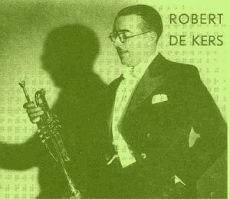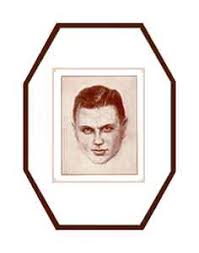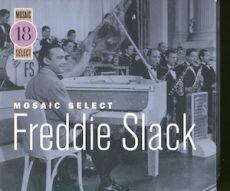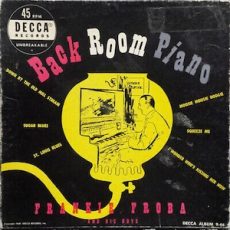
Daily Dose Of Jazz…
Robert De Kers was born Robert De Keersmaeker on August 10, 1906 in Antwerp, Belgium. He learned to play piano as a child, and began playing jazz with local musicians while in his teens. He was the pianist for the Bing Boys in 1924-1925, then picked up trumpet.
As a trumpeter Robert toured Italy with the Jeff Candrix Band, brother of Fud Candrix, and played there with Carlo Benzi and David Bee’s Red Beans. Later in the 1920s he was associated with Harry Flemming and Josephine Baker.
The 1930s saw him working with Jean Robert and Jean Omer in addition to leading his own ensemble, the Cabaret Kings, which toured Europe. He continued recording into the 1950s, also working as an arranger and composer; he led bands in the United States, and Germany following World War II and was later head of the Wurlitzer Company’s Belgian operations.
Trumpeter and bandleader Robert De Kers died on January 16, 1987 in Brussels, Belgium.
More Posts: bandleader,instrumental,jazz,music,trumpet

Daily Dose Of Jazz…
Peter Packay was born Pierre Paquet on August 8, 1904 in Brussels, Belgium and lived with his family in China for part of his childhood, but returned to Belgium in 1912. As a teenager he was crippled in one arm by an accident, but decided to learn to play trumpet anyway at age 20, joining the Varsity Ramblers.
He co-founded a band called Red Beans with David Bee and served as its principal composer of originals. Bee left the group and was replaced by Robert De Kers, and Packay remained its leader until its dissolution in 1929. In the 1930s he formed another group, Packay’s Swing Academy, which played with Coleman Hawkins among others. He also did arrangements for bandleader Billy Arnold.
As a composer, Packay’s works included Alabama Mamma, The Blue Duke, Dixie Melody, and Lullaby for a Mexican Alligator. Following World War II he gave up performance to concentrate on composition and arrangement for songs like Jazz in the Rain, One Day and Grey Skys.
Trumpeter, arranger, and composer Peter Packay died on December 26, 1965 in Westende, Flanders, Belgium.
More Posts: bandleader,history,instrumental,jazz,music,trumpet

Daily Dose Of Jazz…
Frederick Charles Slack was born on August 7, 1910 in Westby, Wisconsin and learned to play drums as a boy. He later took up the xylophone and at the age of 13 he changed to the piano. He studied with a local teacher throughout high school and at the age of 17, he moved with his parents to Chicago, Illinois where he continued his musical training.
Meeting clarinetist Rosy McHargue gave him the opportunity to accompany her to hear Bix Beiderbecke and Earl Hines. His first job was with Johnny Tobin before moving to Los Angeles, California where he worked with Henry Halstead, Earl Burtnett and Lennie Hayton.Then in 1934 he joined Ben Pollack.
He went on to play with the Jimmy Dorsey Band in the 1930s and was a charter member of the Will Bradley Orchestra when it formed in 1939. Known to bandmates as Daddy Slack, he played the piano solo on Bradley’s recording of Beat Me Daddy, Eight to the Bar, one of the early white boogie-woogie hits and a classic of the big band era.
Forming his own band in 1942 he signed with the newly founded Capitol Records and recorded three songs at his third recording session. His recording of Cow Cow Boogie was sung by the 17-year-old Ella Mae Morse and was Capitol’s first gold single. Slack continued to record some 80 tracks with Capitol until 1950.
Slack also recorded with Big Joe Turner, Johnny Mercer, Margaret Whiting and Lisa Morrow. He has been mentioned in song, co-wrote the 1945 classic The House of Blue Lights, first recorded with singer Ella Mae Morse.
Swing and boogie-woogie pianist and bandleader Freddie Slack was found dead in his bedroom in Hollywood, Los Angeles, California, from undetermined causes on August 10, 1965.
More Posts: bandleader,instrumental,jazz,music,piano

Daily Dose Of Jazz…
Frank Froeba was born August 6, 1907 in New Orleans, Louisiana. While still in his teens he held jobs in the bands of Johnny Wiggs and John Tobin. By the age of 17 he played with Johnny de Droit in New York City in 1924-1925, then led his own band in Atlantic City, New Jersey.
In the latter half of the decade Frank moonlighted in other dance ensembles. He recorded with Jack Purvis in 1930 and with Jack Bland in 1932, then worked with Benny Goodman from 1933 to 1935. This was followed in 1935 to 1944 where he led his own band and played on recordings for Columbia and Decca. Among his sidemen were Bunny Berigan, Jack Purvis, Bobby Hackett and Joe Marsala.
He was a house pianist for Decca in the 1930s and 1940s, playing behind Bob Howard and Lil Armstrong, among others. In 1955, he moved to Miami, Florida and performed as Frank Froba, moving more into popular performance.
One of his more popular tracks, Jumpin’ Jive, which he co-wrote with Cab Calloway. It was recorded by Joe Jackson on his Joe Jackson’s Jumpin’ Jive album.
Pianist and bandleader Frank Froeba died on February 16, 1981 in Miami.
More Posts: bandleader,history,instrumental,jazz,music,piano

Daily Dose Of Jazz…
Floyd Maurice “Stumpy” Brady was born on August 4, 1910 in Brownsville, Pennsylvania. At the end of the 1920s he performed and recorded with Zack Whyte’s Chocolate Beau Brummels before touring with Al Sears. During the next decade he played with Andy Kirk in New York, recorded with Blanche Calloway, and returned briefly to Whyte’s band in 1933.
He replaced Ed Cuffee in McKinney’s Cotton Pickers, and then performed and recorded with Claude Hopkins from 1936 to 1938 and Teddy Wilson from 1939 to 1940. As a member of the Lucky Millinder orchestra, Stumpy played a solo while accompanying Sister Rosetta Tharpe in the soundie Lonesome Road in 1941.
Other musicians and bandleaders he worked with include Al Sears, Count Basie, Joe Guy touring with Billie Holiday in 1945, Jay McShann, Fletcher Henderson, Roy Eldridge, and Cat Anderson. After a period of inactivity in the 1950s, Brady resumed playing in the 1960s with Slide Hampton’s band, Luckey Roberts’s orchestra, and Edgar Battle’s big band.
Trombonist Stumpy Brady died on February 11, 1998.
More Posts: history,instrumental,jazz,music,trombone


